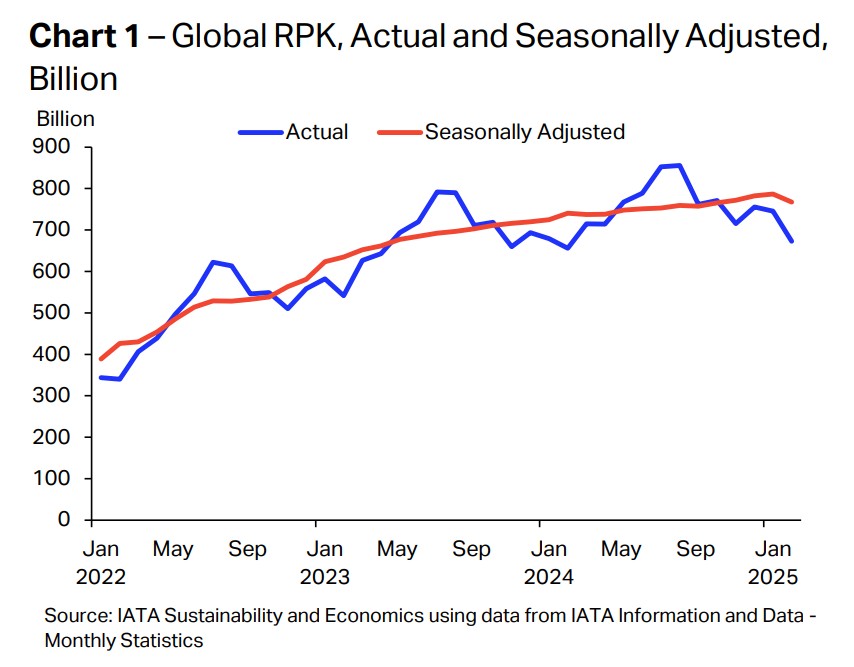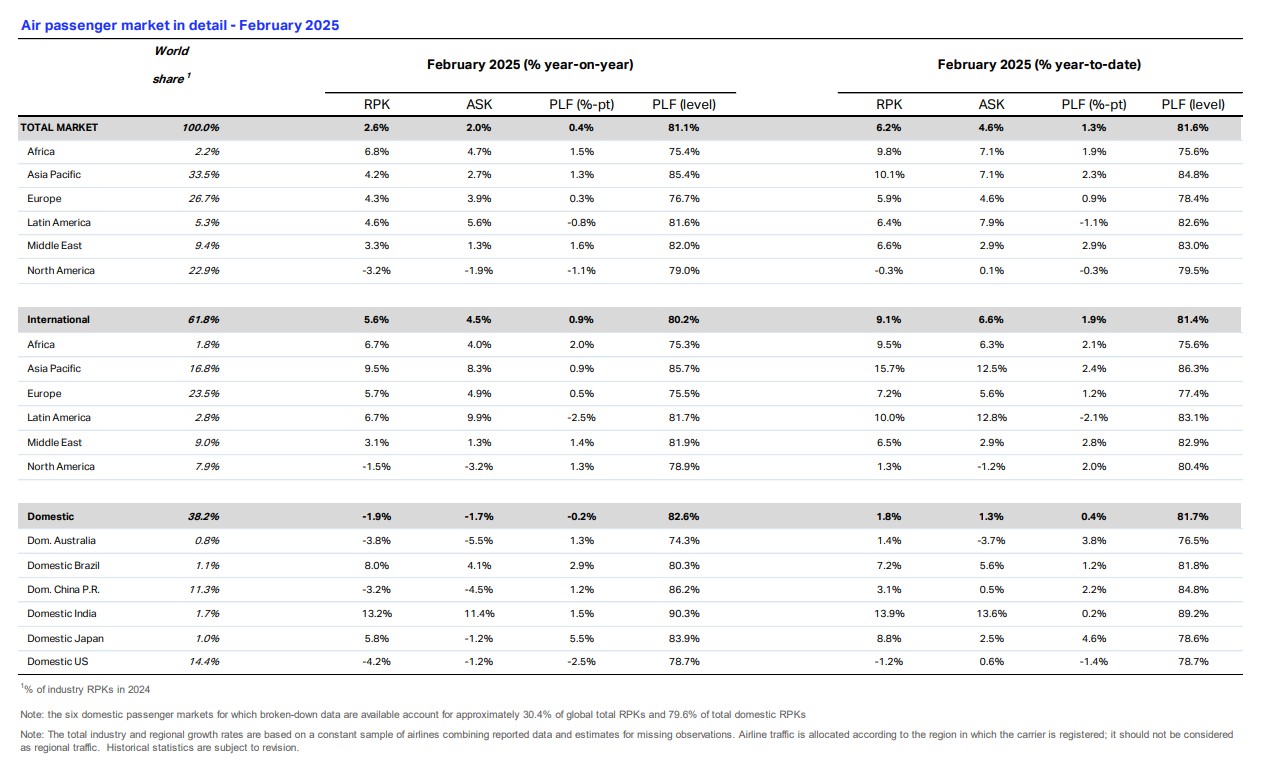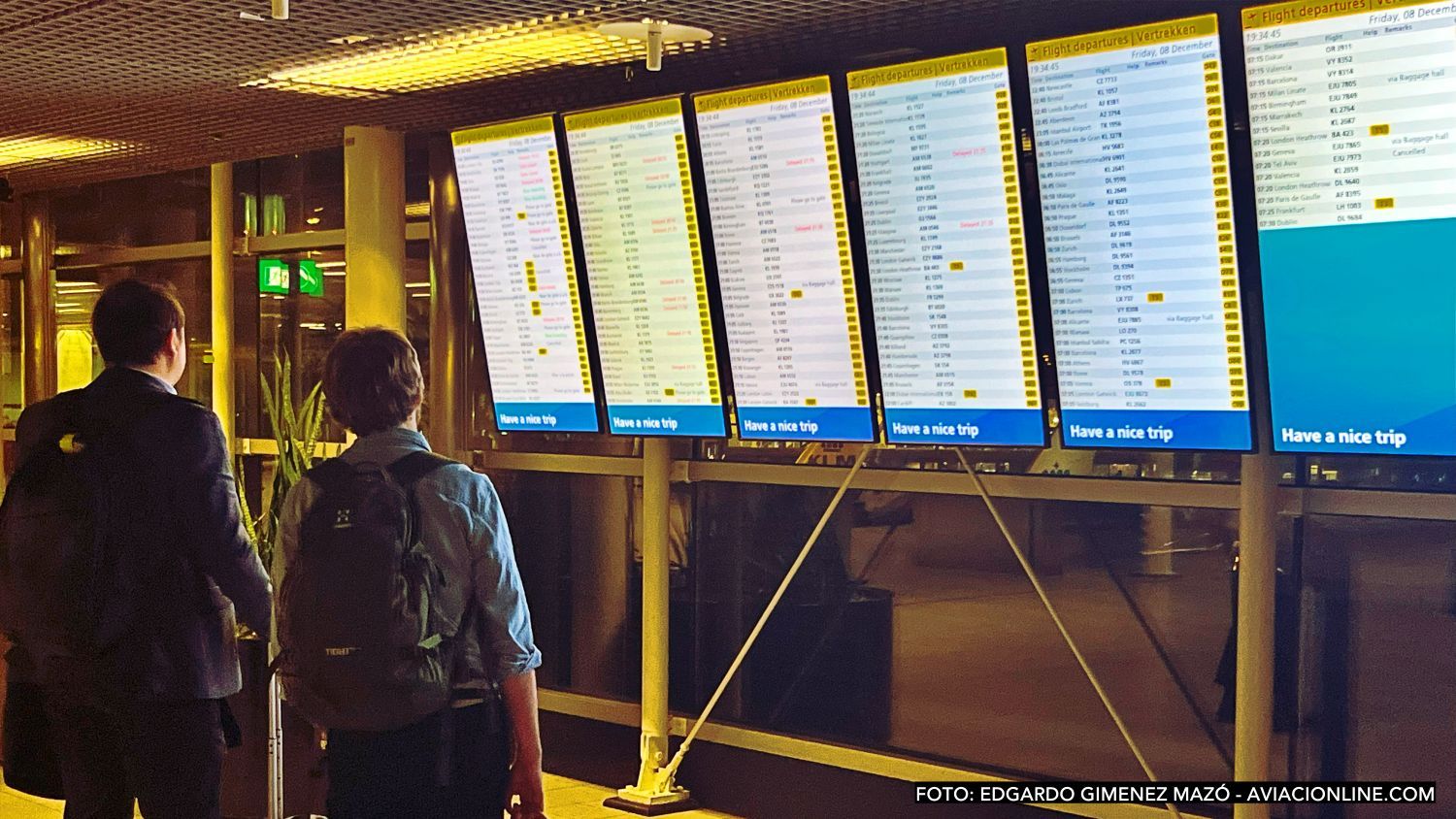Passenger traffic in Latin America grows 4.6% in February, above the global average
The International Air Transport Association (IATA) reported a 2.6% year-on-year increase in global passenger demand for February 2025, measured in revenue passenger kilometers (RPK). Total system capacity, expressed in available seat kilometers (ASK), rose by 2.0%, while the load factor reached 81.1%—a 0.4 percentage point increase compared to February 2024.
In Latin America and the Caribbean, demand grew by 4.6%—the second-highest rate after Africa (6.8%)—while capacity increased by 5.6%, the highest among all regions. This resulted in a 0.8% drop in load factor, which stood at 81.6%, the third highest behind Asia-Pacific (85.4%) and the Middle East (82%).
The overall growth was driven by international traffic, which saw a 5.6% rise in demand compared to the same month last year. Capacity in this segment increased by 4.5%, and the international load factor reached 80.2%, up by 0.9 percentage points.
In contrast, domestic markets saw a 1.9% decline in demand, alongside a 1.7% drop in capacity. The domestic load factor was 82.6%, slightly lower than in February 2024 (-0.2 points).
IATA noted that part of the slowdown may be attributed to seasonal factors, such as 2024 being a leap year and the Chinese New Year falling in January this year, rather than February as in 2024. Nonetheless, the organization highlighted that traffic reached a record high for the month of February.
However, IATA Director General Willie Walsh warned that “we must keep a close eye on developments in North America, which saw declines in both domestic and international traffic.”

International traffic performance by region
- In Latin America, international demand rose by 6.7%, while capacity grew by 9.9%. This resulted in a 2.5 percentage point drop in load factor to 81.7%, reflecting a gap between supply and demand.
- Asia-Pacific airlines posted a 9.5% increase in international demand, with capacity up 8.3%. The load factor reached 85.7%, among the highest across all regions, gaining 0.9 points.
- European airlines saw demand grow by 5.7%, with capacity rising 4.9%. The region's load factor stood at 75.5%, up by 0.5 points from February 2024.
- In the Middle East, demand expanded by 3.1%, while capacity rose just 1.3%. This pushed the load factor up by 1.4 points to 81.9%.
- African carriers recorded a 6.7% increase in demand, with a 4.0% rise in capacity. The load factor climbed to 75.3%, a 2.0-point improvement.
- North American airlines were the only group to post a drop in international demand, falling by 1.5%. Capacity declined by 3.2%, but the load factor improved by 1.3 points to 78.9% due to tighter capacity management.

Domestic markets: Declines in the U.S. and China, strong growth in India
Domestic markets showed mixed performance among major economies. India led the growth, with demand up 13.2% and capacity rising 11.4%. The domestic load factor reached 90.3%, up 1.5 points.
In the U.S., domestic demand fell 4.2%, while capacity decreased 1.2%. Load factor dropped to 78.7%, down by 2.5 points. IATA suggested this may be linked to a decline in consumer confidence.
China's domestic market also contracted, with demand down 3.2% and capacity falling 4.5%. Still, the load factor rose 1.2 points to 86.2%.
Other markets like Brazil and Japan showed solid performance. Brazil saw an 8.0% rise in domestic demand and a 4.1% increase in capacity, lifting the load factor to 80.3% (+2.9 points). In Japan, demand increased 5.8% despite a 1.2% drop in capacity, pushing load factor to 83.9%, 5.5 points higher year-on-year.
In Australia, domestic traffic declined by 3.8%, and capacity fell by 5.5%. Still, the load factor improved to 74.3% (+1.3 points).
Debate over European passenger rights regulation
Willie Walsh also addressed the recent closure of Heathrow Airport, using the incident to criticize Europe’s and the UK’s current passenger rights framework, calling it “not fit for purpose.”
“The current passenger rights regime in Europe and the UK is inadequate,” Walsh said. “Even with proposed reforms, EU Regulation 261 continues to penalize airlines for delays caused by infrastructure failures, while those responsible for such failures face no consequences,” he warned.
IATA noted that compensation and assistance costs for passengers amount to billions of euros annually. While the organization welcomed efforts by Poland’s EU Council presidency to push for changes, it believes the current reform proposal “fails to offer a real solution.”
Download document: IATA Air Passenger Market Analysis - February 2025


Comentarios
Para comentar, debés estar registrado
Por favor, iniciá sesión